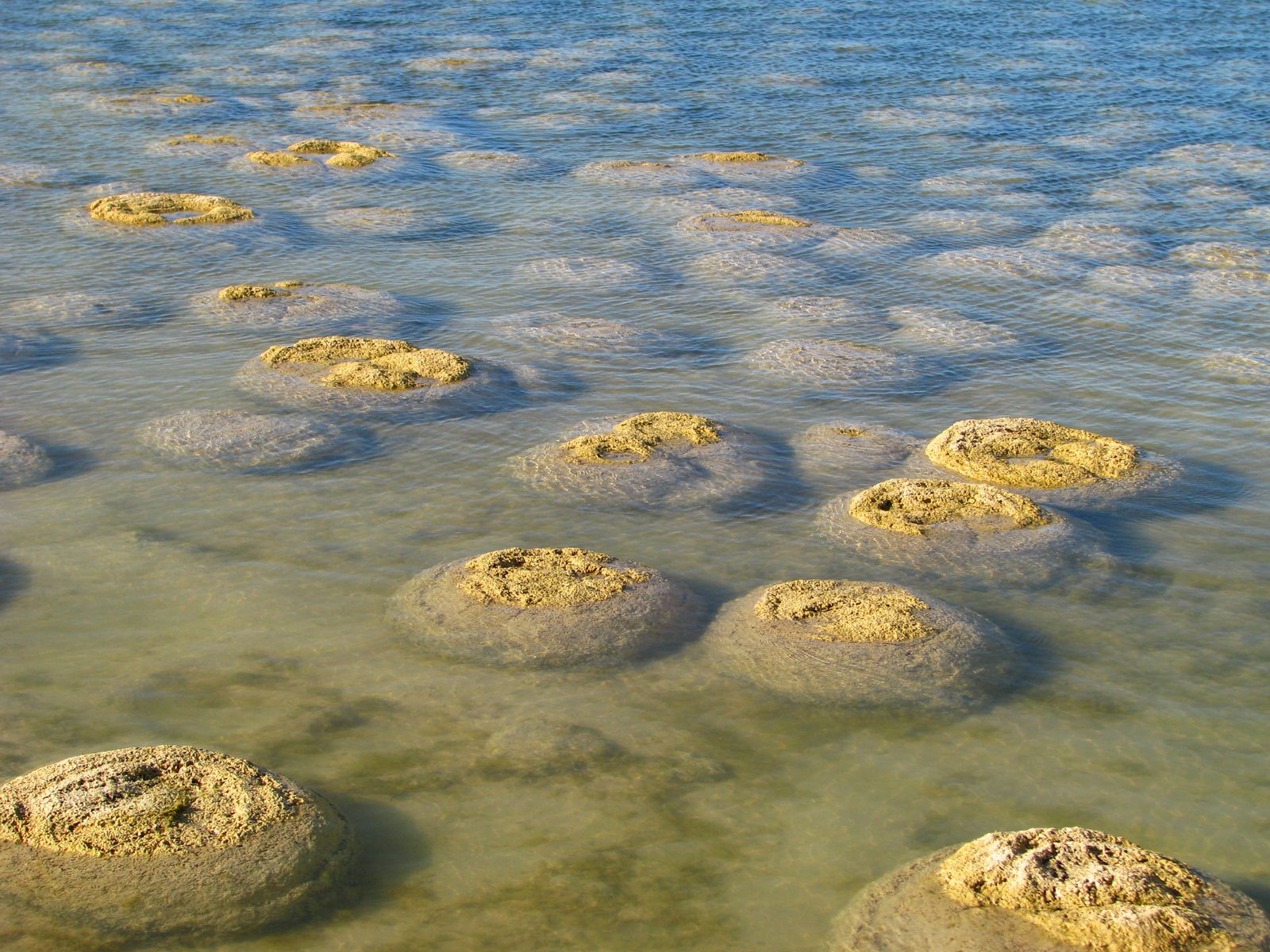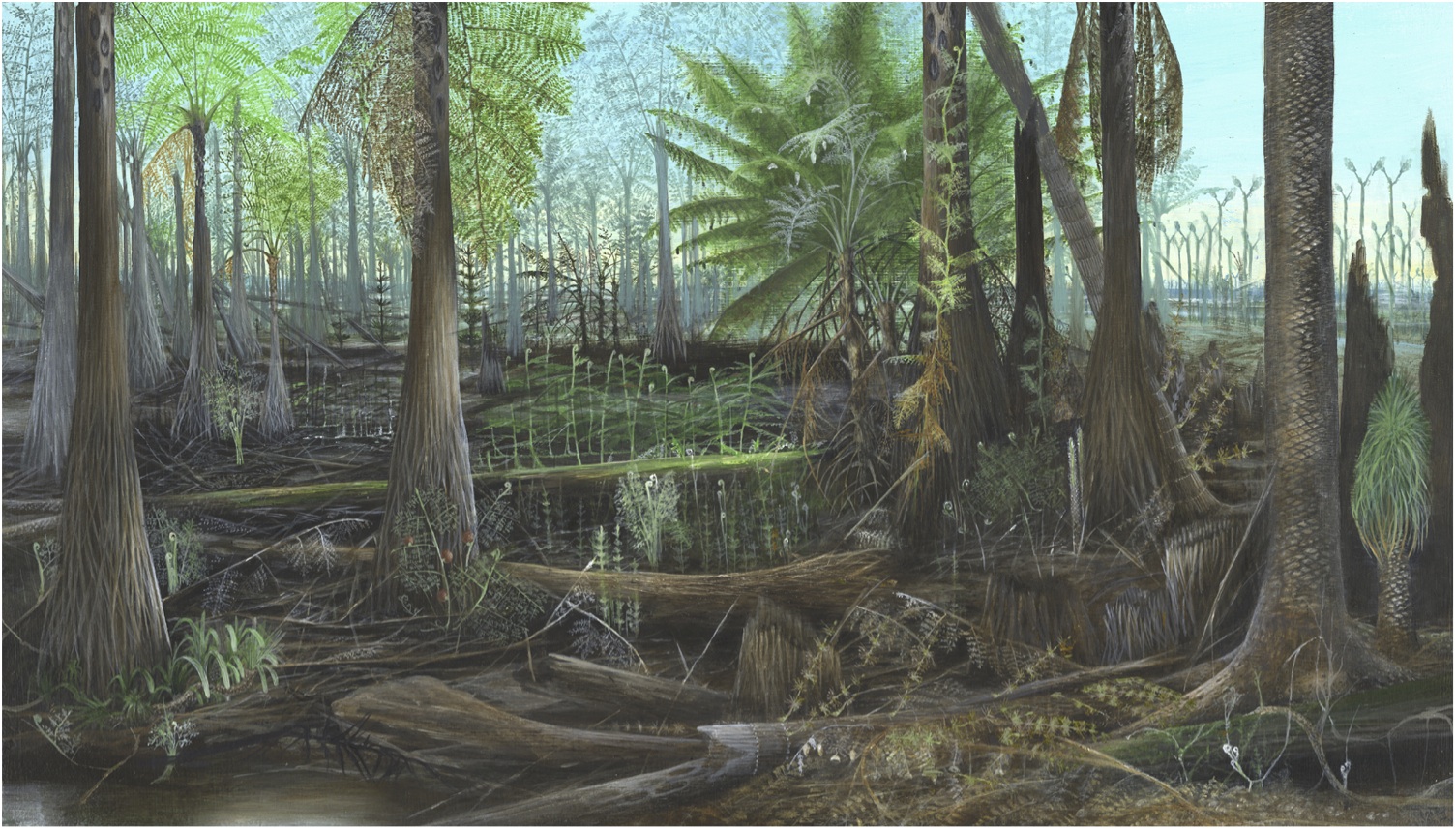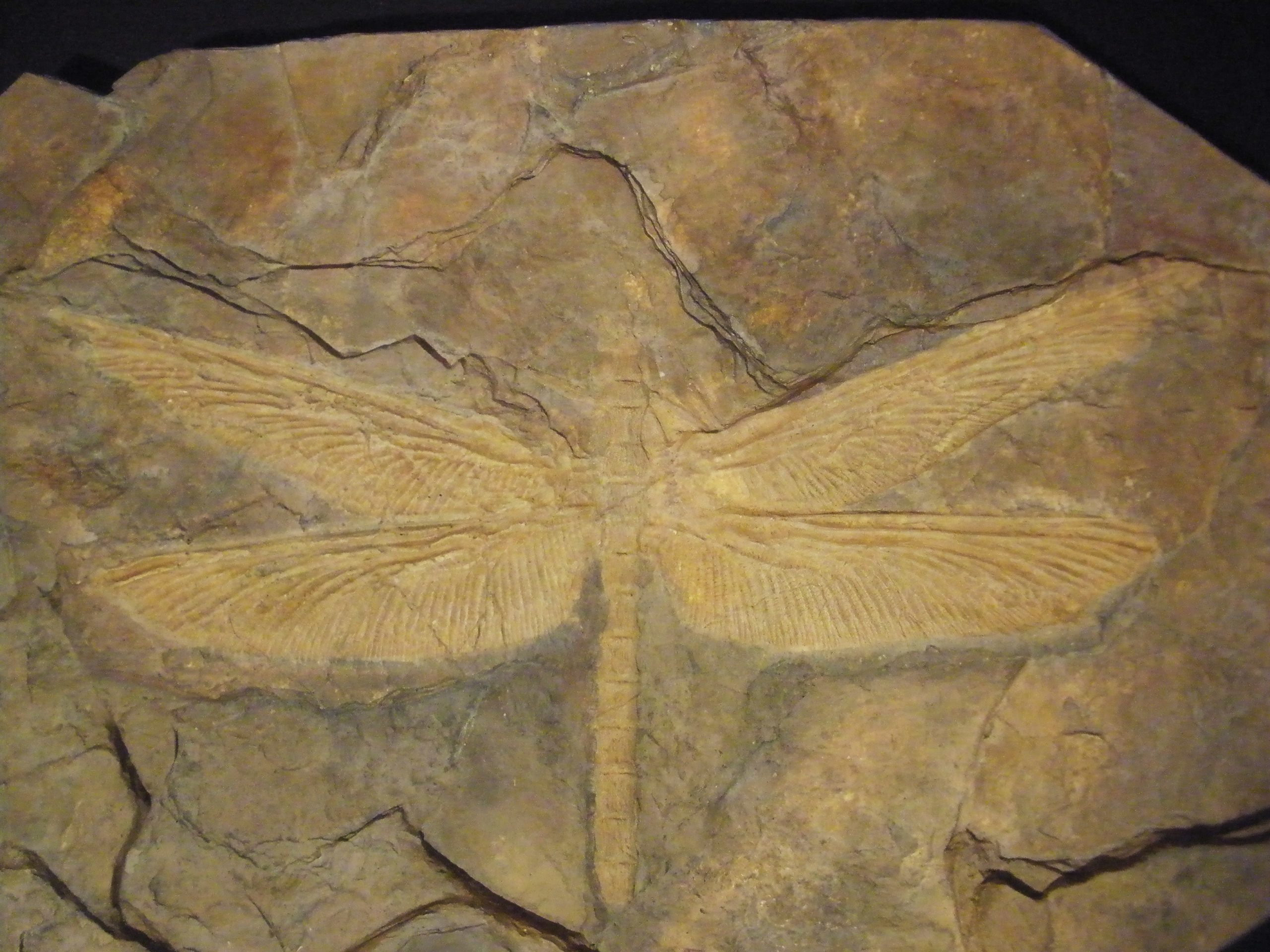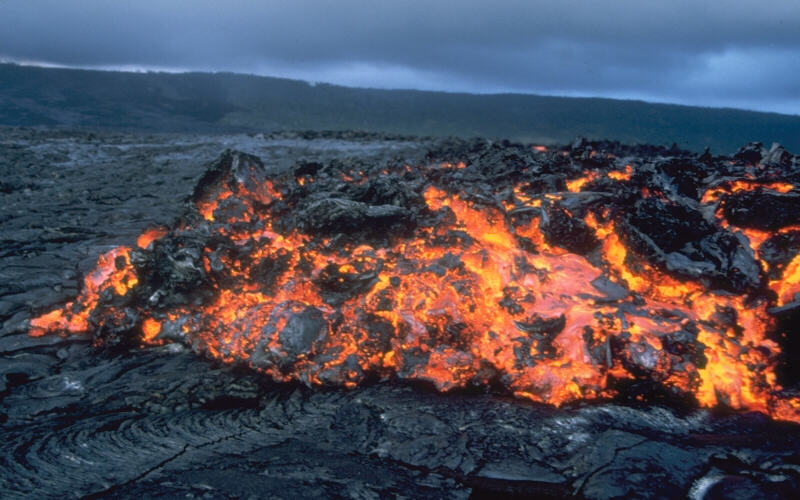One of the staples of time travel stories is the idea that our heroes will visit earlier geological periods in Earth’s history. Of course — because they will want to see dinosaurs with ostrich feathers and giant millipedes. But they generally forget something very important about Earth’s past.
If you’re going back more than 30 million years, you’ll probably need to bring an atmosphere suit.
Photo via AP/Jon Tunney
As you’ve probably heard, the Earth’s atmosphere can change a lot in a pretty short period of time. Since the mid-eighteenth century, levels of carbon dioxide have risen substantially in the Earth’s atmosphere, from 280 parts per million (ppm) to 395 — the result of industrial processes that have released tons of carbon into the environment. And in previous eras, the fluctuations have been much greater than that.
Considering that the Earth is about 4.5 billion years old, you’d expect there would be a lot of times to visit. The problem? Your body is most comfortable with today’s atmospheric concentration of oxygen, which makes up about 21 per cent of the gasses in our atmosphere. Unfortunately, for most of those 4.5 billion years the Earth has been around, the air had no oxygen in it at all. In fact, if you wanted to visit Earth any time before the past half-billion years, you’d going to need serious breathing equipment.
Hell Planet: 2.7 Billion Years Ago
For most of its lifetime, the Earth’s atmosphere contained no oxygen. Methane rained from the skies, and the thick, cloudy atmosphere smelled like rotten eggs and farts. Carbon dioxide was at levels 10 to 200 times greater than today. Plus the sun was much younger back then, and was radiating at only at about 70 per cent of its current brightness. The only way the planet stayed warm was by bathing itself in these greenhouse gases, which kept the place from freezing despite the dim sun.

Despite the horrific atmospheric conditions, life had already begun. Roughly 2.7 to 2.5 billion years ago, single-celled organisms called cyanobacteria figured out how to split water molecules (which are made up of two hydrogen atoms and one oxygen atom, hence H2O) and create free oxygen. These life forms had created photosynthesis, and they spread across the Earth in vast, algal mats, floating on the oceans and burping out oxygen. There’s a sight any time traveller ought to see. Eventually, these cyanobacteria created so much oxygen that the air was rich with it — though it did take about a billion years.
Here’s the problem for visitors going back to these incredible early times in our planet’s history. Without oxygen, you would die almost instantly. Methane isn’t itself toxic, but it is suffocating. CO2, however, can be toxic. So if you didn’t die of atmospheric poisoning, you’ll still find yourself unable to breathe. Definitely wear your SCUBA gear.
Monsters and Suffocation: 550 Million Years Ago
Things started to look up, oxygen-wise, about 600 million years ago. Thanks to all those cyanobacteria, oxygen levels were rising rapidly. More free oxygen in the environment meant that multi-cellular animals could burn energy more efficiently — and so they evolved in greater numbers. Suddenly, animals were everywhere. The oceans were packed with insane creatures like Anomalocaris, with its protruding eyes and spiny mandibles, along with worms, trilobites, and more.
With all those animals swarming in the waters, and all those plants pumping out oxygen, it must have been a great time for the atmosphere, right? Not really — at least, not for humans.
Oxygen levels were probably at about 4-5 per cent around this time, so we would be nowhere near the 21 per cent we’re used to breathing. Mostly, the air would have been nitrogen and greenhouse gases. Again, it’s likely that you’d suffocate without a breathing apparatus.
Oxygen Freakout in Fire Town: 300 Million Years Ago
Though carbon and oxygen levels have been fairly stable for about half a billion years, there were nevertheless periods of rapid change — and these are exactly the kinds of interesting times your time travellers might want to visit. One of my personal favourites is the Carboniferous period, often called the age of forests or the age of coal. Most of the coal on Earth was created after this period, because it was a time when trees absolutely ruled over everything.
Life had crept up on land fairly recently in geological time, and it was dominated by trees very much like firs. The land was covered in swamps, so when trees died they sank to the bottom of the water and decomposed without releasing any carbon into the atmosphere. Over millions of years, those trees became coal — but in the short term, they transformed the atmosphere.
The massive growth of trees all across the landscape pumped oxygen into the atmosphere. And meanwhile, carbon was being sequestered at an alarming rate. The result was an atmosphere with roughly 35 per cent oxygen — nearly 65 per cent more than today. But that oxygen didn’t push the carbon levels down. It just made the atmosphere denser and thicker. As a human, you’d be able to breathe just fine. Humans can breathe up to 100 per cent oxygen for hours at a time.

by Mary Parrish
But you’d notice a couple of dangers from those high oxygen levels. First of all, the sky would have a dark, bruised colour. That’s because all the oxygen in the air would make everything a lot more flammable. University of Cambridge public health professor Peter Baxter, who studies the effect of atmospheric changes on humans, told io9 via email that even a small jump in oxygen levels would be dangerous:
If oxygen went up dramatically from 21% to 25%, even damp vegetation would burn in a fire, as would many other substances normally resistant to burning and the world could catch fire in that case.
So imagine a world at 35 per cent oxygen. Basically, there would be a forest fire going somewhere pretty much all the time. The skies would be permanently smoky.
The Carboniferous was also an era when giant insects ruled the forests. Because the air was so much thicker, the early ancestors of dragonflies evolved to have wingspans that were sometimes as much as 2 or 0.91m wide.

Image by Ghedoghedo
Millipedes could grow up to 8 feet long, and three-foot-long scorpions were a common sight. Some scientists have speculated the high levels of oxygen allowed insects and arthropods to grow to such immense sizes, but no one is certain why giant millipedes died out as the Carboniferous came to a close.
Carbon Loading: 250 Million Years Ago
One of the most interesting periods before the present day came at the end of the Permian period, when a massive volcano erupted in the region now known as Siberia. That volcano vomited up lava and greenhouse gases for roughly a millennia, causing the biggest spike in carbon the atmosphere had known since the pre-Cambrian era. It’s likely that the levels of carbon dioxide (CO2) reached 7000 ppm — which is incredibly high compared to today’s 395 ppm.
But would we survive it? Time travellers interested in mega-volcanoes want to know.

Image via USGS
The fact is that we could probably breathe in this kind of atmosphere, at least for a little while. Even though rising CO2 levels may push oxygen levels down, we could take it. Baxter noted:
Nothing much happens until 15,000 ppm, i.e., 1.5% CO2 concentration in air — and even then it’s more of a safety level than one which leads to any obvious effects. Thus the work exposure limit is 5000 ppm meaning you can be exposed at 5000ppm average for 8 hours a day at work (5 days a week) without a problem.
15000 ppm is a permitted limit for brief exposures at work [in the UK] … A stuffy office may reach 1000 ppm.
I don’t think 7000 ppm would be a problem, but as we don’t expose people for long periods to that level we don’t know if that could have some long-term health effects so it would not be a good idea, but that’s all I can say.
The issue here isn’t so much suffocation. As Baxter points out, CO2 is toxic and can be lethal even when oxygen levels in the air are sufficient for us. So if CO2 ever reached over 15,000 ppm, we’d start to see the effects of CO2 poisoning, which begin with lightheadedness and nausea and may end with unconsciousness and death.
Lawrence Berkeley Lab air pollution specialist
Mark Mendell published a study that showed people do suffer some problems with mental acuity when CO2 reached the levels it had in the atmosphere 250 million years ago. But Mendell cautions that the findings in his study were “outside of current thinking” and difficult to interpret. He said via email:
Other work previously had not suggested health effects until 10-20 thousand ppm CO2 — then there were effects on deeper breathing, and also an increase in panic. Generally, CO2 is considered to be highly regulated physiologically within a narrow range, by adjustment of breathing rate, because of its importance. The people in NASA and the Navy that [became] interested in this issue after reading our article wondered if there could be effects they weren’t aware of in space capsules and submarines, where CO2 can be 5000 ppm. They wouldn’t want impaired decision making in these environments any more than regular citizens would want their kids impaired while taking life-determining SATs in crowded potentially high-CO2 classrooms. But the NASA people apparently think that physiologic adaptation to higher CO2 happens relatively quickly and that even any short-term effects that they have missed would go away. It’s really not clear, though.
So it’s likely that you’d be fine running around with early dinosaurs and the ancestors of alligators 250 million years ago. You might have shortness of breath, and you might decide to do something really dumb like visit the mega-volcano while it was still erupting. But you probably wouldn’t need to bring oxygen with you unless you planned to stay there permanently.
There were also periods in the late Cretaceous, around the time most of the dinosaurs were wiped out 65 million years ago, when CO2 levels reached 3000 ppm in the atmosphere. Again, not a great idea to breathe that for a long period of time — but OK in the short term.
Happy time travelling!
